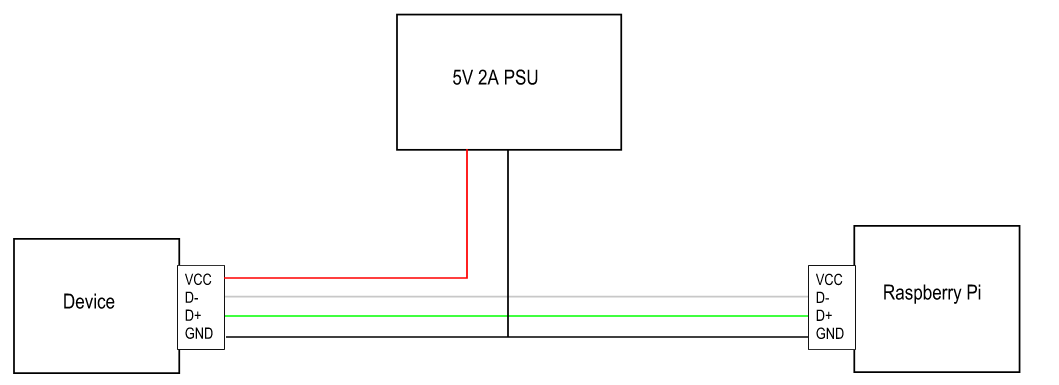I was wondering if the following is possible:
I was hoping to be able to do the above with my USB 2.0 10m active extension cable as I cannot find a Y version of the same cable, to simply cut the male USB head that only contains power to plug it directly into my external 5V power supply.
The reason I ask is because my device draws too much current exceeding my Raspberry Pi's USB current limit. This is only the case because I have other devices also connected to it which I cannot remove. I also cannot use an externally powered USB hub because USB suspension becomes a problem for me. I also understand there are cables with DC barrel jacks for external power however is not suitable for my use case as they are expensive and I will need to do this many times for different systems I make.

